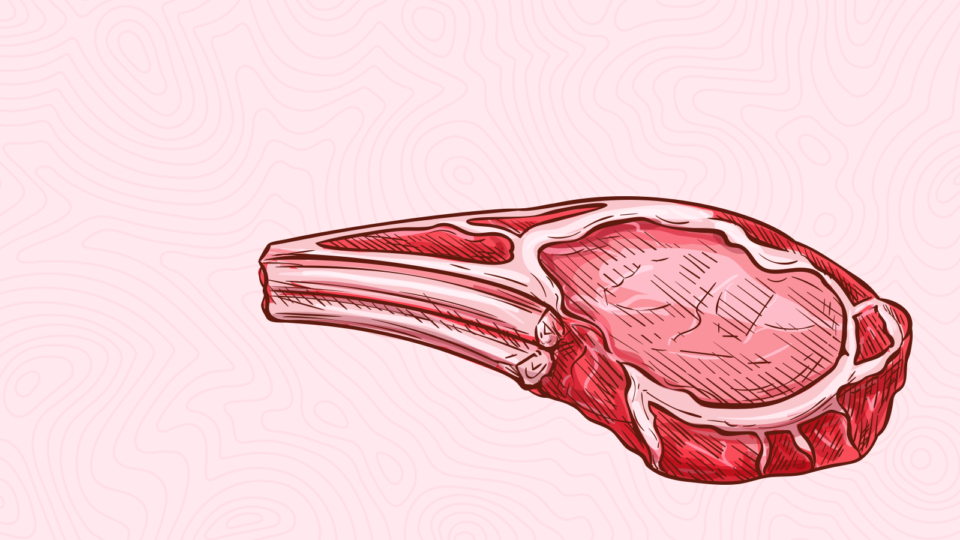This is why beef prices have shot up
Your plate of beef stew will now cost more as beef prices continue to rise. Here’s why.

Beef has for a long time been the go-to meat for most Kenyan households. This as chicken, goat, fish were reserved for special occasions due to their higher price. However, in the recent past, the cost of beef has surpassed that of the other meat products.
On its online store, Kenya Meat Processors sells a kilo of boneless beef at KSh700, while beef on bone sells at KSh600 a kilo. In contrast chicken sells at KSh700 for a capon weighing 1300g with kienyeji chicken that is considered more flavourful retails at KSh700.
In interviews with industry stakeholders conducted at the Kenya Meat Expo 2023 which took place from 3rd – 5th May 2023 at KICC, Nairobi under the theme, “Promoting resilience in the meat industry through investment and innovation for job creation and economic growth,” Moolah sought to find out reasons for the price hike in the cost of meat.
The constant themes that cropped up in the different interviews were the long drought experienced in the country, the current heavy rains, lack of investment in animal production, increase in cost of animal feed, sub-division of farms resulting in ranchers not accessing economies of scale, and cultural blocks leading to preference for dairy farming over beef farming.
More than 2.4 million livestock, which pastoralist families rely upon for nourishment and livelihood, have died due to the drought according to a report by The International Rescue Committee.
“Over the last three years we have lived through the longest dry spell in the last 40 years which has decimated the livestock for the pastoralist communities who form the bulk of our supply,” says Francis Kamau, Operations Manager, Neema Livestock & Slaughtering Investment Limited.
In a twist of the vagaries of nature, the long drought will be followed by heavy rains across the country with even the dry north getting drenched.
Regional weather monitoring institutions like the US National Oceanic and Atmospheric Administration have now warned governments in East Africa to prepare for floods and possible humanitarian aid in northern Kenya.
For Quality Meat Packers CEO, Imtiaz Velji, the heavy rains after the dry spell leave a bittersweet taste. On one hand, it is great that the rains provide fodder for the malnourished animals but on the other hand, “there is hoarding of animals so that they can gain weight and provide better returns at the market. The resultant scarcity of bulls for slaughter leads to higher prices.”
Kenya experiences an unmet local demand for beef, which stands at 648,000 tonnes against a local production capacity of 300,000 tonnes, according to the Kenya Agricultural and Livestock Research Organisation (KALRO).
Kamau paints a bleak picture of the possible scenario going forward saying, “Lack of investing in animal production will lead to a huge crisis if it is not contained. Before I joined the meat sector, I was in the fish side, and I saw Nile perch stocks get depleted in Lake Victoria. So, it is a possibility. Government should encourage and sensitise more Kenyans to get into this sector.”
Even though local supply is not fully met, Kenya exports meat with ready markets in places like Mauritius, Saudi Arabia, the United Arab Emirates (UAE), Egypt and Sudan.
Najibs Livestock International is a Kenyan company that supplies purebred livestock to the global market. According to Jamal Kamau, Najibs’ Farm Manager, “the demand for meat in the local and international market is high and we are not able to meet it. I would encourage more people to venture into the industry.”
This is backed by Velji who points out that beef production is best for large scale production done in ranches. However, Kenya faces a land crunch with subdivision of land into small portions the norm now.
“Beef production is difficult for small scale farmers. Kenyan livestock is grass fed with the animals allowed to free range. Rearing animals in small tracts of land means the farmers do not enjoy the economies of scale. Eventually the high cost is passed to the consumer,” explains Velji.
Jamal offers that feed lotting (zero grazing) is the best option for beef production but for now, Kenya’s meat is mostly from pastoralists who move about. Zero grazing is mostly done with dairy farming which is more popular in areas away from the North.
“If I had 100 beef cattle and 10 acres of land, I would choose beef farming over dairy farming. Get good Borana cattle and make money. Buy a bull at Sh3,000, feed it for 3 months, and the bull will reach the live weight of 300kg. With a kilo going at KSh450 wholesale, do the math. This is unlike in dairy where the time is long, and costs are crazy,” says Kamau.
All three industry stakeholders agreed that the cost of feed is a huge factor in the rising price of meat. They all decried the fact that the government has left meat producers without a coherent policy. The effect of feed being extremely expensive is meat farmers being forced to go to Uganda and Tanzania to get feed which raises the cost of production.
“The old way of just having herds of cows that depend on rainfall is not sustainable. If that is not addressed there will always be a scarcity in the number of animals available for slaughter which then translates into rising costs. There must be adapting of better, modern farming in Kenya. Irrigation, water harvesting, and the use of technology must be incorporated into meat production,” is how Velji sums it up.
Even as Kenyans find the rising cost of beef bitter there is a silver lining in this story.
According to Jamal, Kenyan meat especially from the North and areas in Rift Valley like Baringo is considered hotcake in the Arabian export market for its sweet, unique taste. This is as United Arab Emirates, Saudi Arabia and Bahrain currently have a market share of 75% of the entire meat and meat products to the world which stands at USD 65.4 million.
Food for thought.




